Last updated on March 23rd, 2024 at 12:02 pm
If you have ever wondered why an Electric iron turns on and off all by itself, then you are at the right place. In this post, you will see a teardown of an Electric iron, what’s inside it, and learn how an Electric iron works.
I had this old – very old electric iron for a long time now. So for science, I am going to open it and show you how an Electric iron works.
You can watch the video given below or continue reading the article.
Table of Contents
Parts inside an electric iron
- Thermostat
- Heating element
- Turning the knob or tightening the screw
- Neon bulb
- Mica sheet
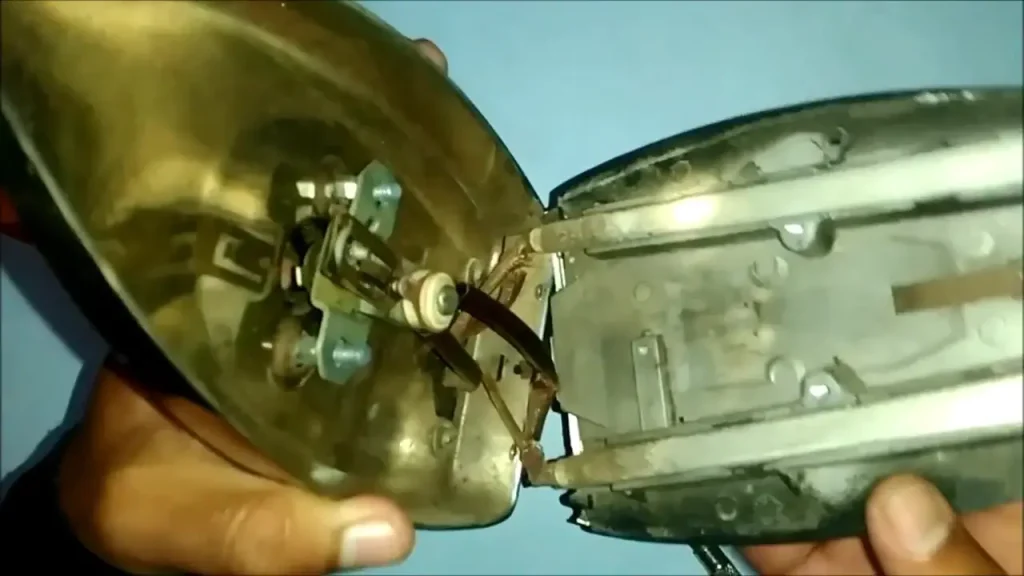
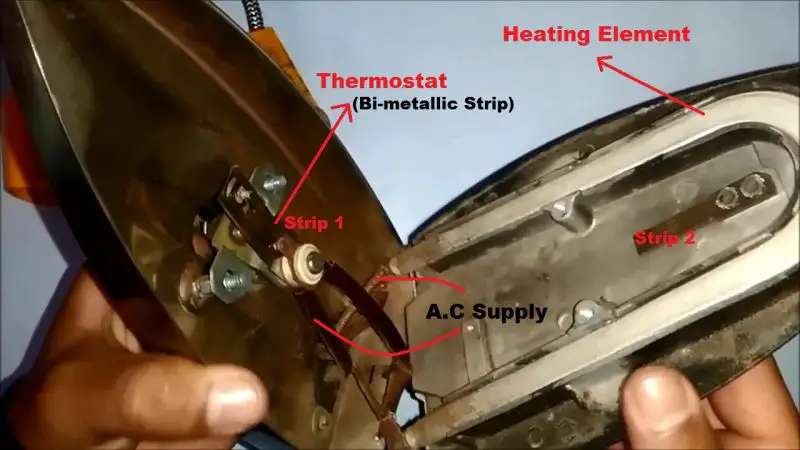
1. Thermostat
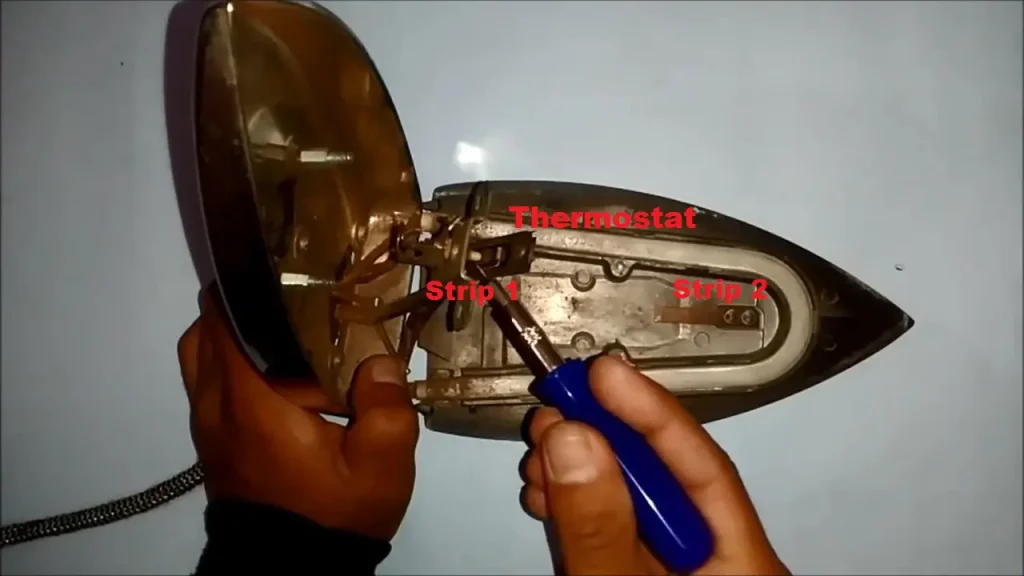
- A thermostat is a device that changes its orientation with an increase in temperature.
- This thermostat consists of a Bi-metallic strip. As the name itself suggests, Bi-metallic means two metal strips.
- Each of the two strips has a different coefficient of thermal expansion. One has a higher whereas the other has a lower coefficient of thermal expansion. So that one bends more than the other metallic strip at any particular temperature.
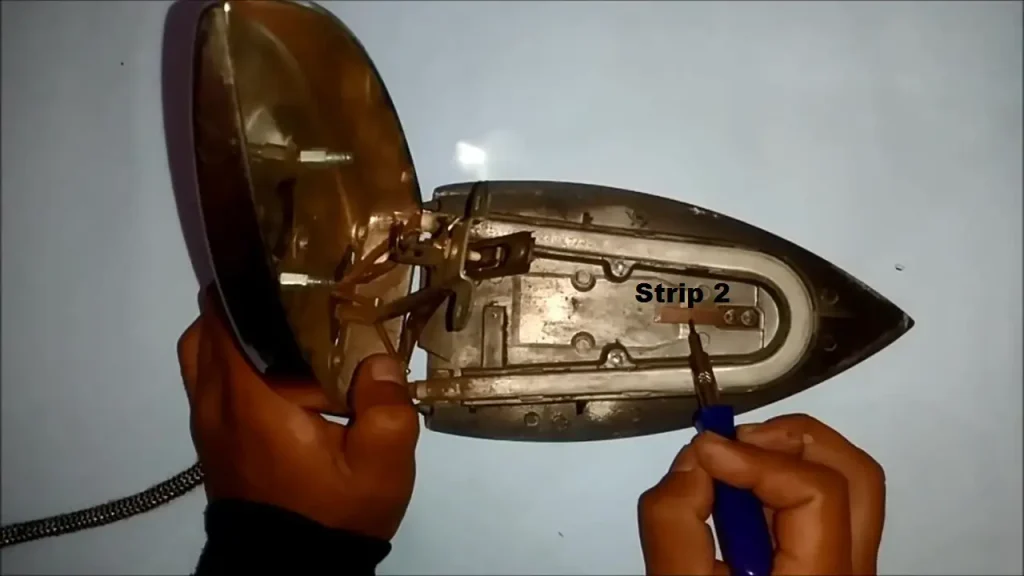
- In the image given above: at a higher temperature, Metallic strip 2 bents and pushes the Metallic strip 1 upward to a position where the electric connection between strip 1 and live wire breaks. And the Electric iron gets turned off.
2. Heating element
- A heating element is the heart of any electric iron. It consists of a nichrome wire placed inside the mica sheet.
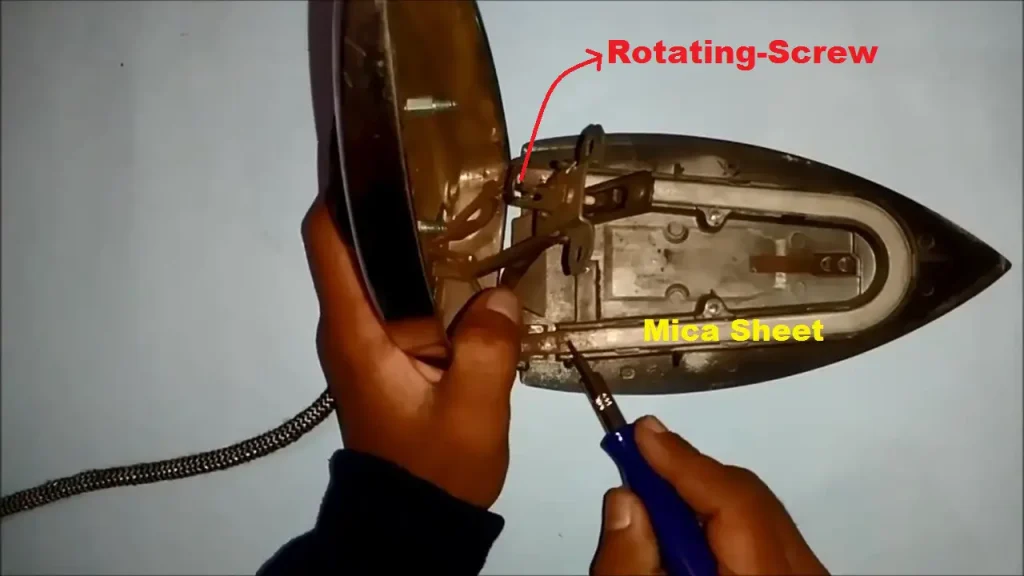
- This nichrome wire heats up as current passes due to I2R loss. So the longer the time of flow of current through it, the more the heating of the element.
- Mica is chosen as a cover in a heating element because:
- (a) It is an excellent insulator.
(b) withstands a very high temperature.
3. Turning knob or tightening screw
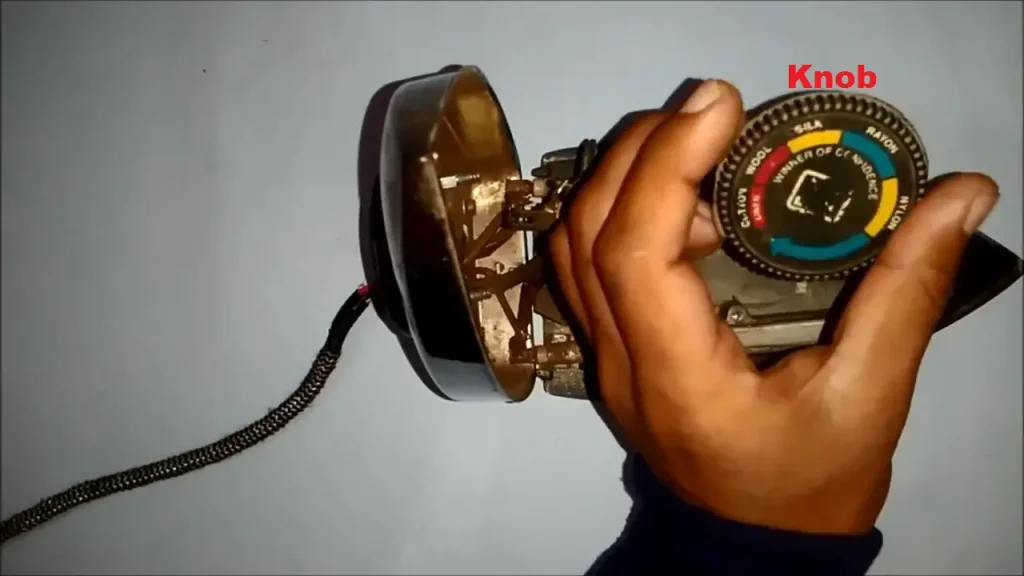
- Using this knob, we can adjust the temperature of the electric iron according to our needs.
- This knob is connected to a screw that controls how hard the contact or upper metallic strip must bend to separate and break the electric connection so that the Electric iron gets turned off.
- This means if I keep turning the screw, then the temperature required to bend this upper metallic strip also increases or you can say the temperature required to break the electric connection increases.
4. Neon bulb
- This bulb is used as an indicator for Electric iron.
- It is connected in parallel to the heating element.
Working of Electric Iron
**Watch the video given above to see the Electric iron in action
- An electric iron is first connected to the power supply.
- The neon bulb lights up indicating the start of the heating process in the heating element.
- Let’s say the knob is at its lowest position right now. In this case, as soon as the temperature of strip 2 rises to 100 degrees(let’s say); it bends enough to break the electric connection between strip 1 and the live wire.
- Now the electric iron is off.
- After some time, strip 2 contracts to its original position, and thus the electric connection is made again causing the Electric iron to turn on.
- Now let’s say the knob is at its uppermost position. In this case, as soon as the temperature of strip 2 rises to 200 degrees(let’s say); it bends enough to break the electric connection between strip 1 and the live wire.
- Now the electric iron is off.
- After some time, strip 2 contracts to its original position, and thus the electric connection is made again causing the Electric iron to turn on.
Read Similar Articles:
How does an LDR or Photoresistor work? LDR Basics
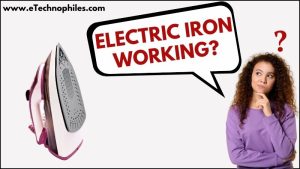
my iron box that is made to use dc power source, can I just change the plug and use the same with a power source without causing any fault?